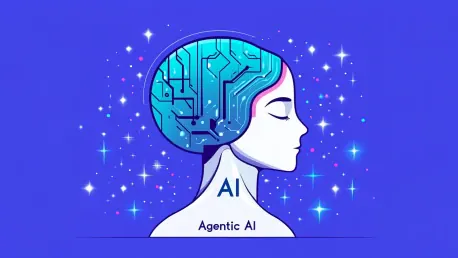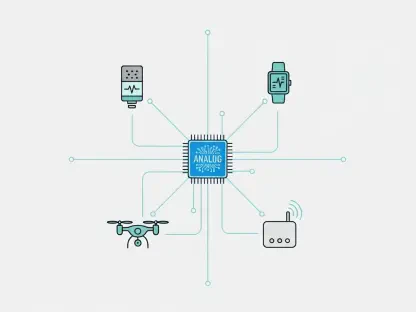The rise of agentic AI is poised to revolutionize business process management by autonomously following instructions, making decisions, and taking actions without human intervention. Unlike generative AI and robotic process automation (RPA), this technology offers advanced capabilities, significantly transforming how enterprises operate. However, turning this promising innovation from theoretical potential into practical reality presents considerable challenges. Organizations need to navigate these complexities to harness agentic AI’s full potential effectively.
The Promise of Agentic AI
Agentic AI is being hailed as the next evolutionary step in automation technology, presenting a leap forward from the more static RPA systems. While RPA functions much like a train moving on predetermined tracks, agentic AI is akin to a self-driving car capable of navigating diverse routes adaptively. This analogy helps illustrate agentic AI’s ability to interpret data, predict outcomes, and learn from new information dynamically, allowing it to manage complex tasks that RPA cannot handle.
Software vendors such as Salesforce, Microsoft, and Amazon are actively promoting agentic AI tools like Agentforce, Copilot-based autonomous Agents, and Bedrock Agents. These tools aim to significantly improve automation capabilities within businesses by providing more dynamic, adaptable solutions. However, despite the confident marketing, the practical realities of integrating these technologies into existing workflows are more intricate and demanding than vendors often suggest. The successful deployment of these tools depends not only on their inherent capabilities but also on an organization’s readiness to adopt and adapt to new systems.
The technology promises significant enhancements in the automation of business processes, enabling enterprises to handle complex, variable tasks with greater efficiency and accuracy. However, achieving these benefits requires overcoming numerous technical and organizational challenges. It involves not just a technical overhaul but also a strategic approach to integration, necessitating substantial re-engineering of workflows and a shift in organizational mindset towards automation.
Current State of Development
Despite the high expectations, agentic AI remains in the early stages of development. There is a significant gap between today’s large language model (LLM)-based assistants and the fully functional AI agents envisioned by technology proponents. Gartner analyst Tom Coshow highlights that even by 2028, agentic AI might only be integrated into about one-third of enterprise applications, with just 15% of daily work decisions being made autonomously. This forecast underscores the slow adoption curve and the current limitations of the technology.
The challenges associated with implementing agentic AI are not just technical but also operational. Enterprises must navigate numerous hurdles to integrate this new form of automation effectively. The need for extensive data training, reliable AI models, and appropriate infrastructure creates a complex landscape for businesses aiming to adopt agentic AI. Furthermore, the technology’s maturity is still evolving, and businesses need to carefully align their expectations with the practical realities of what agentic AI can deliver today.
This slow adoption rate reflects broader concerns about the technology’s maturity and readiness for widespread adoption. Even as agentic AI continues to improve, businesses will need to manage the transition carefully, balancing the immediate operational needs with the potential long-term benefits. The substantial gap between present capabilities and future potentials means enterprises must tread cautiously, ensuring they are prepared for the complexities associated with implementing such advanced technology.
Challenges in Enterprise Readiness
One of the most significant hurdles in adopting agentic AI is the readiness of enterprises to integrate this sophisticated technology into their existing workflows. The practical integration of agentic AI demands substantial re-engineering of processes to leverage its full potential. Dion Hinchcliffe of The Futurum Group underscores the complexity involved, emphasizing that existing workflows often need to be redesigned to allow agentic AI to process unstructured data and manage dynamic interactions effectively.
Jason Andersen from Moor Insights and Strategy elaborates on the engineering efforts required to successfully implement agentic AI. Setting up the necessary services, APIs, data infrastructure, and control mechanisms is a non-trivial task that demands careful planning and execution. Anil Clifford, founder of Eden Digital, stresses that organizations must shift their approach toward automation, given agentic AI’s probabilistic nature. This contrasts starkly with the deterministic nature of traditional automation methods, requiring a different mindset and strategy for successful adoption.
Adopting agentic AI also involves considerable investment in training and development to ensure that employees are prepared to work alongside these advanced systems. The shift from manual or semi-automated processes to fully autonomous systems necessitates a new skill set and a deep understanding of how best to leverage AI capabilities. Organizations must also address cultural barriers to change, fostering an environment that embraces innovation and is willing to adapt to new ways of working.
Skepticism and Practical Realities
Several industry analysts express skepticism regarding the immediate feasibility of broad agentic AI adoption, citing flaws typical of early-stage technologies. Martin Bechard from Dev Consult Canada points out that current agentic AI offerings exhibit several limitations, which are not uncommon in the nascent stages of technological development. Greg Ceccarelli of Tola Capital adds that the absence of workflow-specific benchmarks to compare agentic AI performance against human tasks is a significant barrier, indicating the field is still immature.
For enterprises relying on legacy systems, these challenges are even more pronounced. Legacy systems often pose significant integration hurdles, complicating efforts to modernize the technological stack to accommodate agentic AI. Shruti Dhumak from Google notes that startups or businesses already operating in the cloud environment might find it easier to adopt such advanced technologies compared to those with older, more rigid infrastructures.
Overcoming these practical challenges requires a balanced approach that considers the current limitations and the potential long-term benefits of agentic AI. Enterprises need to adopt a pragmatic view, understanding that the transition to fully autonomous systems will likely be gradual and require ongoing investment and adaptation. This cautious optimism helps manage expectations and ensures that businesses are prepared for the complexities of integrating such advanced automation technologies into their operations.
Strategic Approaches to Adoption
For enterprises contemplating the adoption of agentic AI, a cautious and strategic approach is crucial. Sanjeev Mohan of SanjMo advises that Chief Information Officers (CIOs) wait to see if they can derive value from existing RPA solutions before making substantial investments in agentic AI. Understanding the specific use cases and the potential benefits they bring is vital when deciding on such investments. This careful evaluation ensures that enterprises do not overcommit to unproven technologies without a clear roadmap to value realization.
A phased adoption strategy might be more pragmatic for some enterprises, allowing a gradual introduction of agentic AI into existing workflows. Eden Digital’s Clifford suggests that rather than attempting an outright replacement of RPA systems, organizations should complement existing automation with agentic AI for more complex, nuanced processes. This approach allows businesses to continue benefiting from their RPA investments for structured, repetitive tasks while progressively leveraging agentic AI for more intricate, context-dependent operations.
This measured strategy balances immediate operational needs with the potential long-term benefits agentic AI can offer. By building on existing automation investments, enterprises can mitigate risks and manage the transition more effectively. This phased approach also provides valuable insights into how agentic AI can be integrated into specific workflows, helping to refine strategies and optimize the performance of these advanced systems.
Future Integration and Evolution
The emergence of agentic AI heralds a significant shift in business process management. This sophisticated technology stands out by independently following instructions, making decisions, and performing tasks without human involvement. Unlike generative AI and robotic process automation (RPA), agentic AI boasts advanced capabilities that dramatically alter how businesses function. However, the journey from conceptual promise to practical implementation is fraught with considerable hurdles. Enterprises must address and overcome these challenges to fully leverage the transformative potential of agentic AI effectively.
Successfully integrating agentic AI requires navigating complex issues such as data security, ethical considerations, and system integration. Additionally, organizations must invest in re-skilling employees and updating existing infrastructures. While the potential benefits are substantial, including improved efficiency and innovation, the path to realizing them demands careful planning and execution. Only by addressing these multifaceted challenges can businesses truly harness the power of agentic AI to revolutionize their operations and achieve sustainable growth.









